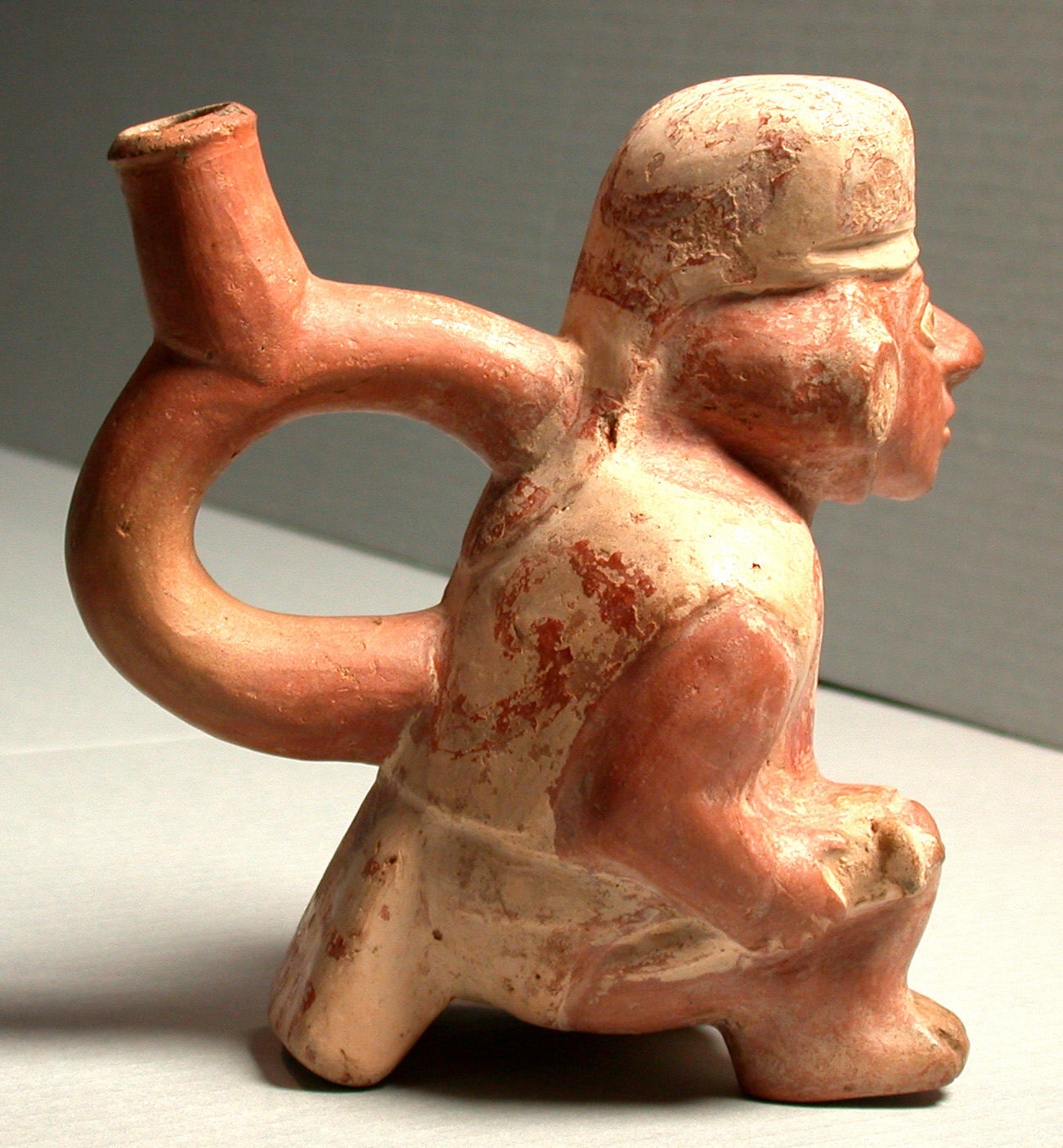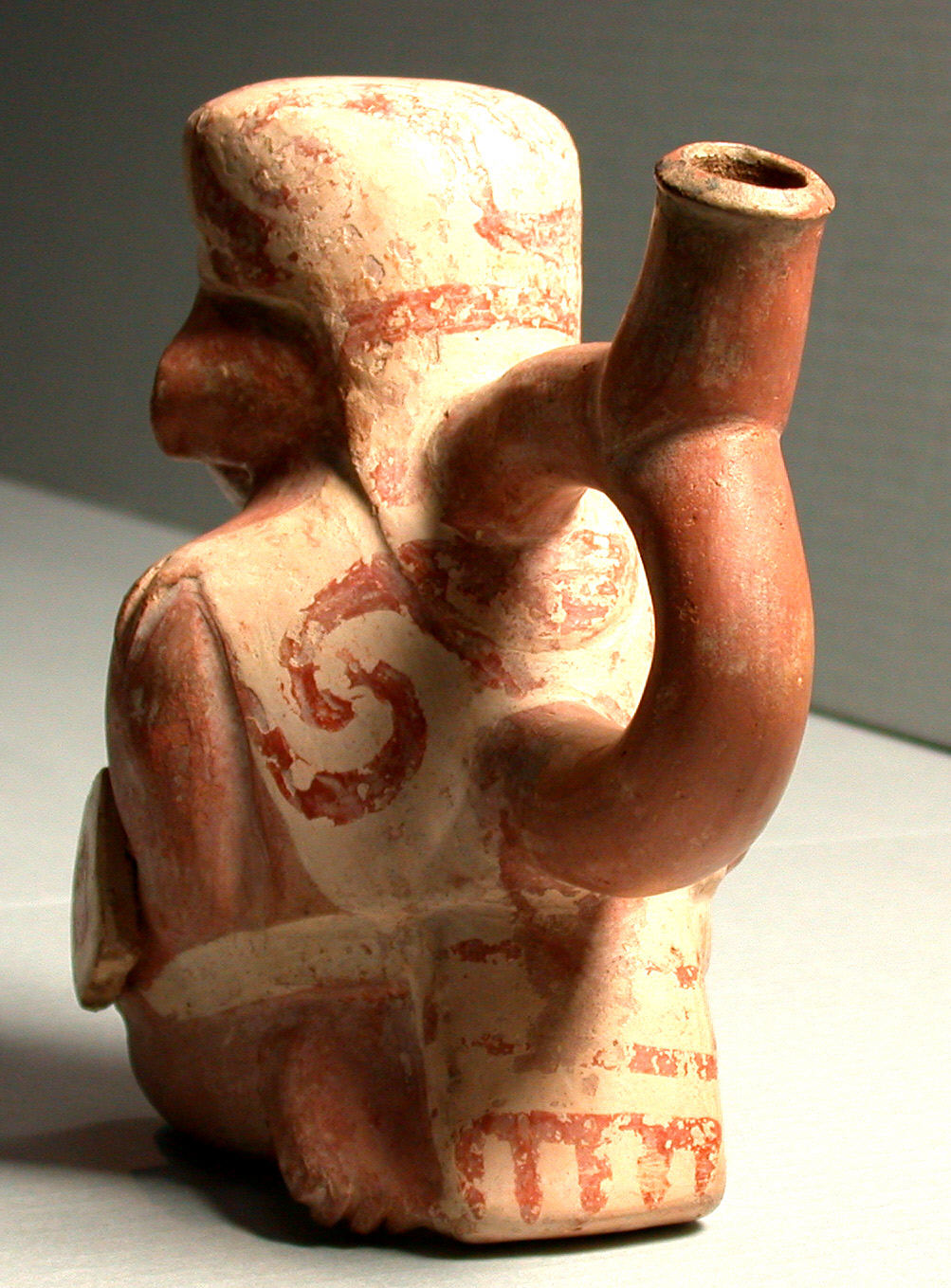Stirrup Spout Bottle with Warrior
Not on view
This stirrup-spout vessel, made by a ceramicist of the Moche culture on the North Coast of Peru, depicts a warrior bending down on one knee. The figure wears a headdress that envelopes his hair and extends over the back of his neck. The headdress is decorated with swirls in a pattern that matches his tunic, which he wears over a white loincloth. He wears circular ear ornaments and holds a small rectangular shield in his left hand and a small mace in his right hand. The stirrup-spout vessel—the shape of the spout recalls the stirrup on a horse's saddle—was a much favored form on Peru's northern coast for about 2,500 years. Although the importance and symbolism of this distinctive shape is still puzzling to scholars, it has been suggested that the double-branch/single-spout configuration may have prevented evaporation of liquids, and/or that it was convenient for carrying. The double-branch may have also held symbolic importance, reflecting a belief in the importance of tinku, a Quechua term for convergence, such as the confluence of two rivers. Early in the first millennium AD, the Moche elaborated stirrup-spout bottles into sculptural shapes depicting a wide range of subjects, including human figures, animals, and plants worked with a great deal of naturalism (Donnan, 1992). About 500 years later, bottle chambers became predominantly globular, providing large surfaces for painting complex, often multi-figure scenes.
The Moche (also known as the Mochicas) flourished on Peru’s North Coast from 200-850 A.D., centuries before the rise of the Incas (Castillo, 2017). Over the course of some six centuries, the Moche built thriving regional centers from the Nepeña River Valley in the south to perhaps as far north as the Piura River, near the modern border with Ecuador, developing coastal deserts into rich farmlands and drawing upon the abundant maritime resources of the Pacific Ocean’s Humboldt Current. Although the Moche may never have formed a single centralized political entity, they shared unifying cultural traits such as religious practices (Donnan, 2010).
References and further reading
Castillo, Luis Jaime. “Masters of the Universe: Moche Artists and Their Patrons,” in Golden Kingdoms: Luxury Arts in the Ancient Americas, edited by Joanne Pillsbury, Timothy Potts, and Kim N. Richter (Los Angeles: J. Paul Getty Museum, 2017), pp. 24–31.
Donnan, Christopher B. Ceramics of Ancient Peru (Los Angeles: Fowler Museum of Cultural History, University of California, Los Angeles, 1992).
Donnan, Christopher B. “Moche State Religion,” in New Perspectives on Moche Political Organization, edited by Jeffrey Quilter and Luis Jaime Castillo (Washington D.C.: Dumbarton Oaks Research Library and Collection, 2010), pp. 47–69. Pardo, Cecilia, and Julio Rucabado, editors. Moche y sus vecinos. Reconstruyendo identidades (Lima: Museo de Arte de Lima, 2016).
Due to rights restrictions, this image cannot be enlarged, viewed at full screen, or downloaded.
This artwork is meant to be viewed from right to left. Scroll left to view more.





